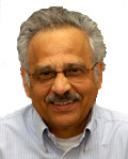Creativity
Creative Occupations and Psychological Disorders
Is creativity linked to psychological disorders?
Posted April 5, 2013
Perhaps our fascination with creative geniuses who were known to have suffered from mental illness raised the oft asked question: Is creativity linked to mental illness? Scholars have argued from both sides of the controversy that mental illness is linked to creativity and its opposite that it is not. More importantly, there is general consensus that extant studies do not show a causal connection between mental illness and creativity. Thrown into this controversy are two highly publicized large-scale studies from Sweden (Kyaga and Colleagues, 2011, 2012), which take a different approach from prior studies, to examine the association of mental illness and creativity. They compared the representation of people diagnosed with certain mental disorders and their 1st, 2nd, and 3rd degree relatives in various creative occupations with randomly selected nested controls (matched on birth year and gender).
The Kyaga et al. (2011) study with 300, 000 Swedish individuals did not find a general association between psychopathology per se and holding a creative occupation. However, they noted that individuals diagnosed with schizophrenia and their offspring were overrepresented in artistic occupations, specifically in visual arts, but not in scientific occupations, where they were underrepresented. Their healthy parents and siblings were overrepresented in creative professions (all creative domains). Individuals with a bipolar disorder were overrepresented in creative professions (both visual and non-visual). Their first-degree relatives were overrepresented in creative professions in general (specifically visual and non-visual arts); their healthy first-degree relatives showed higher odds of being in a scientific rather than artistic occupation. Kyaga et al. (2011) suggested that susceptibility alleles to psychiatric disorders “harbor adaptive advantages and fitness” in healthy relatives (p. 6).
In their second 40-year prospective study on a dataset of over a million people using Swedish total population registers, Kyaga et a., (2012) used two cohorts, one born in 1958 the other in 1987, and included individuals with a variety of diagnoses: schizophrenia, bipolar disorder, unipolar disorder, anxiety; schizoaffective, alcohol abuse, drug abuse, autism, anorexia nervosa, and completed suicide. Their results were as follows:
1. “Individuals holding creative professions (scientific or artistic) had a significantly lower likelihood of being diagnosed with schizophrenia, schizoaffective disorder, unipolar depression, anxiety disorder, alcohol abuse, autism, ADHD, or committing suicide.” (p. 4)
2. Only individuals with a bipolar disorder were overrepresented in overall creative professions, but more specifically in artistic and authors (professional writers, especially literary). Their first-degree relatives were overrepresented in scientific, artistic, and authors.
3. Authors were twice as often diagnosed with schizophrenia and bipolar disorder as controls and more likely to be diagnosed with unipolar disorder, anxiety, substance abuse, and to complete suicide.
3. Accountants were least likely to be diagnosed with any of the psychopathologies investigated.
4. Association with creativity peaked among first-degree relatives rather than the patients with psychotic features, anorexia, possibly autism but not all the disorders.
Kyaga et al (2011) listed several weaknesses of their study, including using (a) a narrow academic definition of creativity, (b) different diagnostic systems (ICD-8, ICD-9, and ICD-10) for diagnosing cohorts, and (c) creative occupations (scientific and artistic) as a “proxy” measure for creativity (p. 6). Although Kyaga, et al. (2012) surmised that their creative professionals may be those who did not reach eminence, the studied participants may actually range in their creative accomplishments from none to very high. Perhaps, it would be more appropriate to compare proportions of eminent creative people in different domains who have been diagnosed with mental illness with those who have not been so diagnosed. Furthermore, given that the study was done in Sweden, the results may not be generalizable to other countries.
Weaknesses of the studies aside, an important question to address is what are the implications of findings that suggest some connection exists between some diagnostic categories and occupational choice? Many difficult questions need further research; for example, are people with schizophrenia and bipolar disorders naturally inclined to pursue certain creative professions, or, do they just drift into certain types of creative occupations as suggested by Kyaga et al. (2012)?
Kyaga et al. (2012) noted that schizophrenia has been linked to language difficulty, which may make them better in areas that do not require traditional type logical thinking such as in art. Kyaga et al. (2011) observed that individuals with schizophrenia outperform “controls in logical deduction that is in conflict with common sense” (p. 6). Or, could it be that being in a creative profession contributes to their illness because of high stress levels? High stress in combination with genetic proneness for psychopathology may make some individuals vulnerable to psychopathology.
An interesting question that arises from the 2012 study is why is there a greater likelihood of “authors” to be diagnosed for psychopathology than in the general population? Is it that writing is a high stress occupation that contributes to the manifestation of their psychopathology? Professional writers probably work alone; does this add to their stress levels, or, is it because they are subject to harsh criticisms from their critics? Should preventive treatment be required for children who show an inclination for becoming professional creative writers?
Interestingly, accountants and auditors showed lower rates of psychopathology than in the general population, but what may account for it is not clear. Accounting and auditing have been classified as non-creative occupations, but we do not know how many of them pursue creative hobbies on a daily basis. Are there no creative accountants? Is there something called creative accounting?
References
Kyaga, S., Lichtenstein, P., Boman, M., Hultman, C. M., Långström, N., & Landén, M. (2011). Creativity and mental disorder: Family study of 300, 000 people with sever mental disorder. The British Journal of Psychology, doi: 10.1192/bjp.bp.110.085316
Kyaga, S., Landén, M., Boman, M., Hultman, C. M., Långström, N., & Lichtenstein, P. (2012). Mental illness, suicide and creativity: 40-Year prospective total population study. Journal of Psychiatric Research. doi: 10.1016/j.jpsychires.2012.09.010




